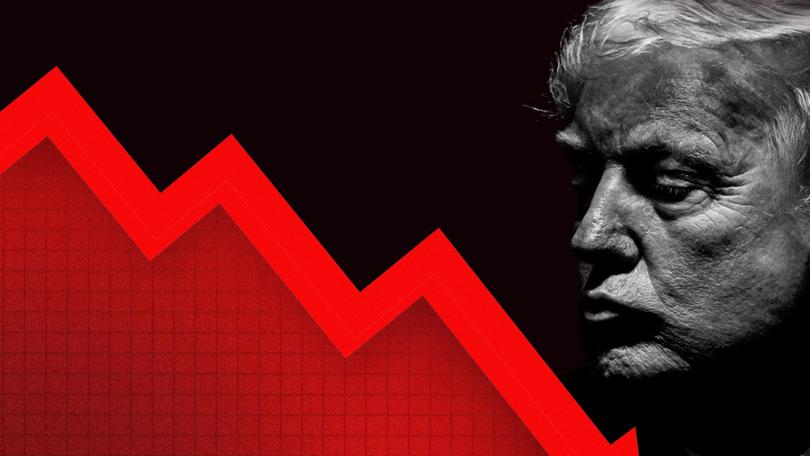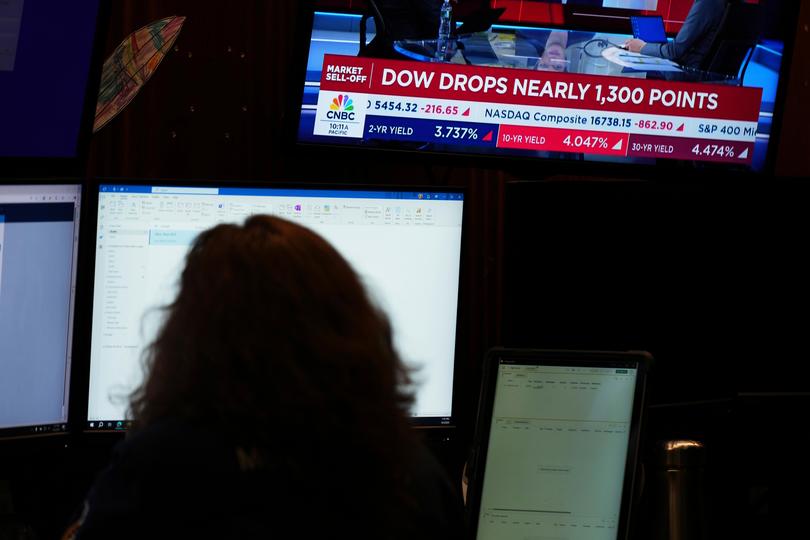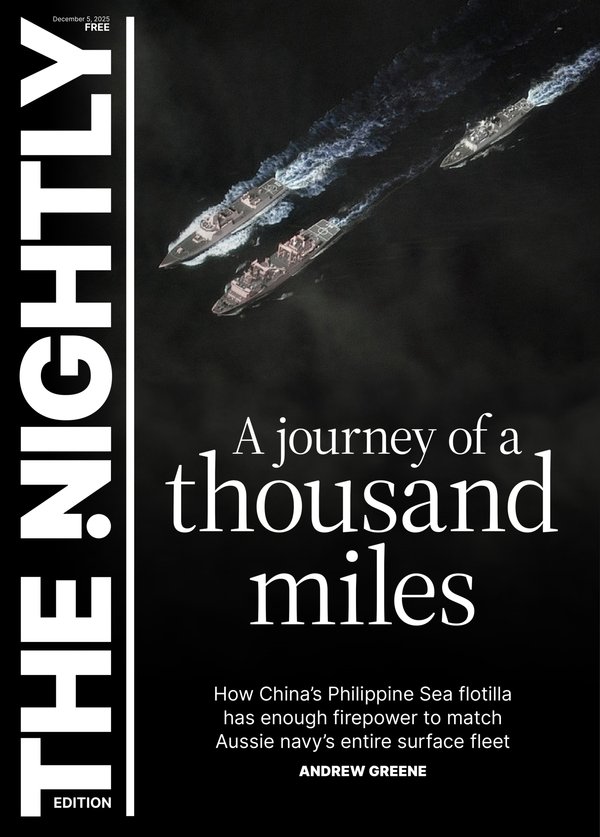Trump tariffs: Wall Street dive wipes $US3 trillion as tariff shock hits global markets

The carnage on Wall Street has spilled into Australian equities, wiping $56 billion from the ASX 200, putting the market into correction territory.
In the worst day in eight months, the S&P/ASX 200 Index dropped 2.4 per cent with ten of the 11 sectors in the red. Energy plummeted 8 per cent.
It follows the worst day on US markets since the onset of COVID-19, with more than $US2.5 trillion ($4trn) wiped from exchanges. The S&P 500 fell 5 per cent, while the NASDAQ tumbled 6 per cent.
Sign up to The Nightly's newsletters.
Get the first look at the digital newspaper, curated daily stories and breaking headlines delivered to your inbox.
By continuing you agree to our Terms and Privacy Policy.The NASDAQ is now teetering on the edge of a bear market, defined as a fall of more than 15 per cent since the start of the year. The broader Russell 2000 index has already crossed that threshold.
Australia high-tech stocks were particularly hard hit in the wake of the selloff, with companies like WiseTech, Appen and data centre operator NextDC all falling more than 6 per cent.
Last night’s collapse was shrugged off by President Donald Trump, who described the fallout as “expected” and said “I think our markets are going to boom. Got to give it a chance.”
The President also welcomed the possibility that the global rout would result in the US Federal Reserve cutting interest rates.
“One thing I like is interest rates going down, like groceries going down,” he said. “I like eggs going down, if you look at it. And very importantly, the gasoline prices are going down.”
But investors are voting with their feet, with fears of a global economic slowdown pushing oil prices 7 per cent lower in two days, driving Australian oil stocks Woodside and Santos 9 per cent in the process.
Safe-haven bond markets have shot up, forcing the yield on a 10-year US treasury to 4 per cent - a significant indicator of a potential recession - possibility now being forecast by a number of major investment banks.
Unusually, the US dollar has not shot up as it usually does in a crisis, a sign that foreign investors are fleeing US assets. That may put further downward pressure on shares going forward.
Even gold, which has been on a steep upward trajectory over fears of instability was not spared the selloff. It fell half a per cent.
The global contagion has caused Asian markets to open sharply down, with Japan’s stock market now down five per cent in two days, while the South Korean index is down 1.6 per cent.
The ongoing sell-off is likely to continue as firms try to make sense of a tariff regime that appears driven less by reciprocity and more by retribution.
The formula underpinning the new tariffs is crudely based on dividing the US trade deficit in goods by the value of imports from a trading partner. It ignores the substantial surplus the US enjoys in services within overall two-way trade.
That calculation has led to tariffs as high as 46 per cent on countries such as Vietnam, despite the fact that many of those goods are high-margin items which benefit American companies.
Nike, for example, sources half of its footwear from Vietnam, indirectly employing 450,000 people across 130 factories in Vietnam. The average monthly wage in Vietnam is around $US300, while a pair of Nike Air Force One sneakers retails for $US115.
Nike’s global gross margin in 2024 was 44 per cent, delivering significant returns to US shareholders and funding high-paying domestic jobs in design, marketing, and sales. Overnight, Nike shares fell 15 per cent. Adidas and Puma fell a similar amount in Frankfurt.
It is not just Nike facing renewed supply chain uncertainty. According to Bloomberg, Apple, Microsoft and Samsung have collectively invested more than $US140 billion in Vietnam since 2019.
Australian companies are not immune, with homewares company Breville, which exports out of Asian manufacturing factories, now down 15 per cent in two days.
The anxiety has pushed the Trade Policy Uncertainty Index to a record high, now three times higher than during the first round of Trump-era tariffs.
While the tariff announcement has battered equities, the uncertainty around the administration’s plans are likely to cause further chaos.
Yesterday US Treasury Secretary Scott Bessent declared the tariffs were permanent and would not be open for negotiation.
Today, President Trump told reporters that “every country” had called the administration to plead for tariff relief.
“The tariffs give us great power to negotiate,” Mr Trump said. When asked if that meant a deal could be done, he said it “depends”.
“If somebody said that we’re going to give you something that’s so phenomenal, as long as they’re giving us something that’s good,” Mr Trump said.

That uncertainty will plague firms sweating on a complete overhaul of their supply chains to determine if the tariffs applied will outweigh the benefits of cheaper manufacturing in developing countries. Not knowing whether a deal may be done will hamstring any decision-making.
Christian Baylis, chief investment officer of Fortlake Asset Management said markets would continue to be roiled in the absence of certainty.
“I would prefer the certainty of him saying, ‘This is it, and it’s locked in concrete and I’m not changing’.
“I would prefer that than him to-ing and fro-ing. You just want to know where you stand, and then currencies can adjust, asset markets can adjust, trade can adjust and the world can move on,” Mr Baylis said.
“What’s worse is the uncertainty in the back and forward, throwing the US economy around like a rag doll and using it as a negotiating tool to get what he wants.”
The continuing uncertainty has prompted a number of Australian banks to bring forward their forecasts for interest rate cuts to next month, with markets pricing in four more cuts this year.
The AMP’s head of investment strategy Shane Oliver, said the surprising fall in the US dollar may also force the Reserve Bank’s hand.
“Put simply ‘US Exceptionalism’ is being questioned. This in turn may accelerate de-dollarisation and may add to pressure on non-US central banks, to cut their interest rates as their currencies are not falling and playing the shock absorber role that would normally be expected to flow from higher US tariffs,” he wrote.

